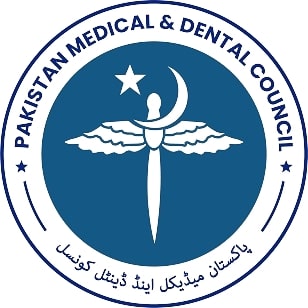HEALTH SEEKING BEHAVIOR OF CHRONICALLY ILL PATIENTS IN A DEVELOPING COUNTRIES: A REVIEW OF LITERATURE
DOI:
https://doi.org/10.59058/jaimc.v20i4.75Keywords:
Homeopathy, allopathy, chronically ill patients, treatment preference, health-seeking behavior, developing country, spiritual healing, Unani TibbAbstract
Background & Objective: In developing countries, allopathic medicine is widely practiced similar to the advanced countries, however, people also believe in other forms of practices including homeopathic, Unani Tibb, spiritual healing and Chinese medicine. It is important to understand the health seeking behaviour of chronically ill patients in order to devise strategies for proving health care in a developing country. The aim of this review is to describe the current evidence on health seeking behaviour of chronically ill patients in a developing country.
Methods: We used Google Scholar, PubMed, CINAHL , Web of Science, Embase and Scopus search engines to search for literature related to health seeking behaviour of chronically ill patients in a developing country using keyword search and using MeSH. Three authors screened articles independently using title and abstracts. Eventually we recruited relevant articles for the full text review.
Results: 893 articles were retrieved using our search strategy. Of these 877 articles were excluded since these were not relevant and in line with our inclusion criteria, leaving 16 articles for full text review. Allopathic medicine is widely preferred by individuals in urban area, however, with increased duration of disease especially cancer and arthritis, a considerable section of population seeks help from Hakeem, homeopathic and spiritual healers.
Conclusion Allopathic medicine with reliance on modern medical therapies is the most preferred choice in urban areas of developing countries, however, desperate chronically ill cancer patients, and patients with arthritis and psoriasis seek treatment from hakeems, homeopathy physicians and spiritual healer, especially in rural and inaccessible areas.
References
Shaikh BT, Hatcher J. Health seeking behaviour and health service utilization in Pakistan: challenging the policy makers. Journal of public health. 2005 Mar 1;27(1):49-54.
MacKian S. A review of health seeking behaviour: problems and prospects. Health Systems Development Programme. 2003.
Eisenberg D, Davis R, Ettner S, Appel S, Wilkey S, Van Rompay M, et al. Trends in Alterna-tive Medicine Use in the United States, 1990-1997. JAMA 1998; 280: 1569-75.
MacLennan A, Wilson D, Taylor A. Prevalence and cost of alternative medicine in Australia. Lancet 1996; 347: 569-73.
Singh V, Raidoo D, Harries C. The prevalence, patterns of usage and people's attitude towards complementary and alternative medicine (CAM) among the Indian community in Chatsworth, South Africa. BMC Complement Altern Med 2004; 4; 3.
Cui Y, Shu X, Gao Y, Wen W, Ruan Z, Jin F, et al. Use of complementary and alternative medicine by Chinese women with breast cancer. Breast Cancer Res Treat 2004; 85: 263-70.
Menniti-Ippolito F, Gargiulo L, Bologna E, Forcella E, Raschetti R. Use of unconventional medicine in Italy: a nation-wide survey. Eur J Clin Pharmacol 2002; 58: 61-4
Riley D, Fischer M, Betsy Singh B, Haidvogl M, Heger M. Homeopathy and Conventional Medicine: An Outcomes Study Comparing Effectiveness in a Primary Care Setting. The Journal of Alternative and Complementary Medicine.Apr 2001.149-159.
Jonas WB. Researching alternative medicine. Nat Med 1997;3:824–82.
Tarvis, W. Misuse of the Term “Allopathy.” NCAHF Home Page
Statement of philosophy, Bulletin of the National College of Naturopathic Medi-cine, undated, circa 1993.
Eisenberg D. Trends in alternative medicine use in the United States, 1990-1997. Journal of the American Medical Association, Vol. 280, November 11, 1998, pp. 1569-75
Abeysinghe D. The relationship between nonqualified allopathic medical practi-tioners and their patients. Journal of Alternative and Complementary Medicine 2008; 14(5). https://doi.org/10.1089/acm.2008.0073
Kumar R, Roy P. Deregulation of allopathic prescription and medical practice in India: Benefits and pitfalls. Journal of Family Medicine and Primary Care. 2016; 5(2). https://doi.org/10.4103/2249-4863.192331
Malik I, Kahn N, Kahn W. Use of unconventional methods of therapy by cancer patients in Pakistan. Eur J Epidemiol. 2000;16:155-160.
Zakar M. Coexistence of indigenous and cosmopolitan medical systems in Paki-stan. International Public Health Series. 1998;1:305
Katole H. Why patients prefer allopathy and ayurvedic therapy in India? EasyChair; 2019.
Olenja J. Editorial Health seeking behaviour in context. East African medical journal. 2003;80(2):61-2.
Samet J, Hunt WC, Key C, Humble CG, Goodwin JS. Choice of cancer therapy varies with age of patient. JAMA. 1986;255(24):3385–90.
Muflih SM, Bashir HN, Khader YS, Karasneh RA. The impact of health literacy on self-medication: a cross-sectional outpatient study. J Public Health (Bangkok). 2020;
Welz AN, Emberger-Klein A, Menrad K. Why people use herbal medicine: insights from a focus-group study in Germany. BMC Complement Altern Med. 2018;18(1):1–9.
Downloads
Published
How to Cite
Issue
Section
License
Copyright (c) 2023 Author

This work is licensed under a Creative Commons Attribution 4.0 International License.
The articles published in this journal come under creative commons licence Attribution 4.0 International (CC BY 4.0) which allows to copy and redistribute the material in any medium or format Adapt — remix, transform, and build upon the material for any purpose, even commercially under following terms.
-
Attribution — You must give appropriate credit, provide a link to the license, and indicate if changes were made. You may do so in any reasonable manner, but not in any way that suggests the licensor endorses you or your use.
- No additional restrictions — You may not apply legal terms or technological measures that legally restrict others from doing anything the license permits.
The editorial board of the Journal strives hard for the authenticity and accuracy of the material published in the Journal. However, findings and statements are views of the authors and do not necessarily represent views of the Editorial Board. Many software like (Google Maps, Google Earth, Biorender (free version)) restricts the free distribution of materials prepared using these softwares. Therefore, authors are strongly advised to check the license/copyright information of the software used to prepare maps/images. In case of publication of copyright material, the correction will be published in one of the subsequent issues of the Journal, and the authors will bear the printing cost.










